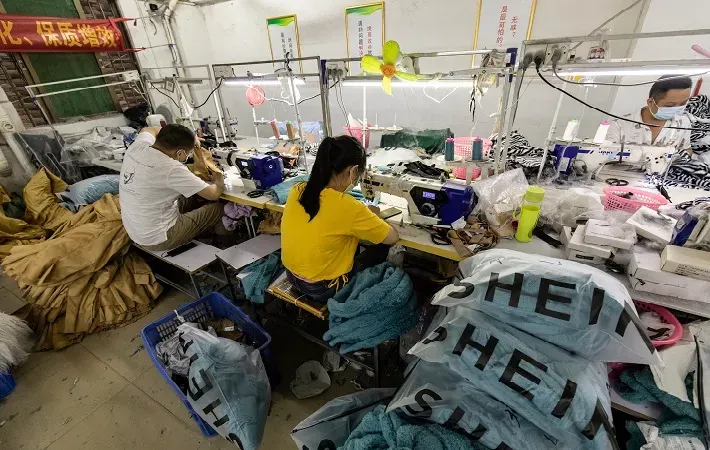Shein: The Pitfalls to their success

By ALICIA MITRA, BA SOCIAL ANTHROPOLOGY AND GLOBAL DEVELOPMENT
Shein was founded in China in 2008. It began as a worldwide leading wedding dress company but is now known as an online fast fashion retailer. In 2020, Shein effectively blew up and was one of the most talked about brands on large platforms such as TikTok and YouTube. In comparison to other fast fashion places such as H&M and ZARA which introduce new pieces or trends through a three-week process, Shein is able to cut this process to five to seven days, therefore every week there are new styles being sold on their website. Through the use of these platforms, techniques, and Shein’s incredibly low prices, young teenage shoppers are attracted to their website. As of 2022, the company now has an overall net worth of $100 billion USD. To increase their revenue, Shein has opened up a number of pop-up shops internationally where they combine the advantage of their physical store with their online presence where customers can view their products in person, which they can buy online via the Shein app.
However, despite Shein’s success as an online fast fashion retailer, there are many pitfalls to their success. Providing the newest trends to their huge amounts of customers in under a week has definitely taken a toll on both the environment and their workers. Greenpeace Germany ran a chemical analysis on 42 items from the online retailer and discovered that the dyes used were poisonous. This method is one of the largest contributors to river pollution which causes harm to both human and marine life. River pollution causes an increased risk of heart disease and respiratory problems to humans, the pollution also causes PH levels to change in the water which can kill aquatic plants, consequently, the plants create little or no oxygen, creating spots where aquatic life cannot survive.
“[the clothes] will stay longer in landfill than in our wardrobes”
The clothes are made from cheap synthetic fabrics like polyester and nylon, these fabrics do not last long and most likely will stay longer in a landfill than in our wardrobes, therefore, contributing to the growing pollution problem. Shein produces thousands of new clothing items every day, and is therefore partly responsible for the increase of global warming and climate change through the vast amounts of carbon emissions their manufacturing process creates. In an attempt to put a stop to the harmful effects fast fashion has on the environment, Greenpeace is protesting to encourage the European Union to enforce its laws on hazardous chemicals, but also these issues need to be addressed through a global treaty.
A recent documentary by Channel 4 exposed Shein for its exploitative acts towards its workers. Its’ employees revealed that they work three shifts per day; however, according to Chinese labour laws, workers cannot work more than 40 hours per week. Channel 4 provided their viewers with a shocking insight into Shein’s workers, who work 18 hours per day, totalling 126 hours per week. On top of this, workers are massively underpaid, they earn a basic salary of £492 per month to make 500 pieces of clothing per day, and if any item is wrong, money will be deducted from their salary. The company responded to the documentary made by Channel 4 in which they said they are concerned about the claims made however, they are following the local laws and regulations based on international labour organisations. Shein, after their working conditions were exposed, released a new model called the ‘environmentally friendly model’, which encourages shoppers to buy and sell previously owned products. Overall, Shein’s responses to the claims made by Channel 4 were all attempts to mask their participation in sweatshop labour.
In sum, despite Shein’s success as a fast-fashion retailer, its popularity and constant upkeep of trends have a detrimental effect on the environment. In order to keep its prices low but still produce copious amounts of clothes, the company has an exploited workforce who are underpaid and forced to work in sweatshops.
Photo Caption: Shein garment workers (Credit: @PanosPictures / PublicEye)



